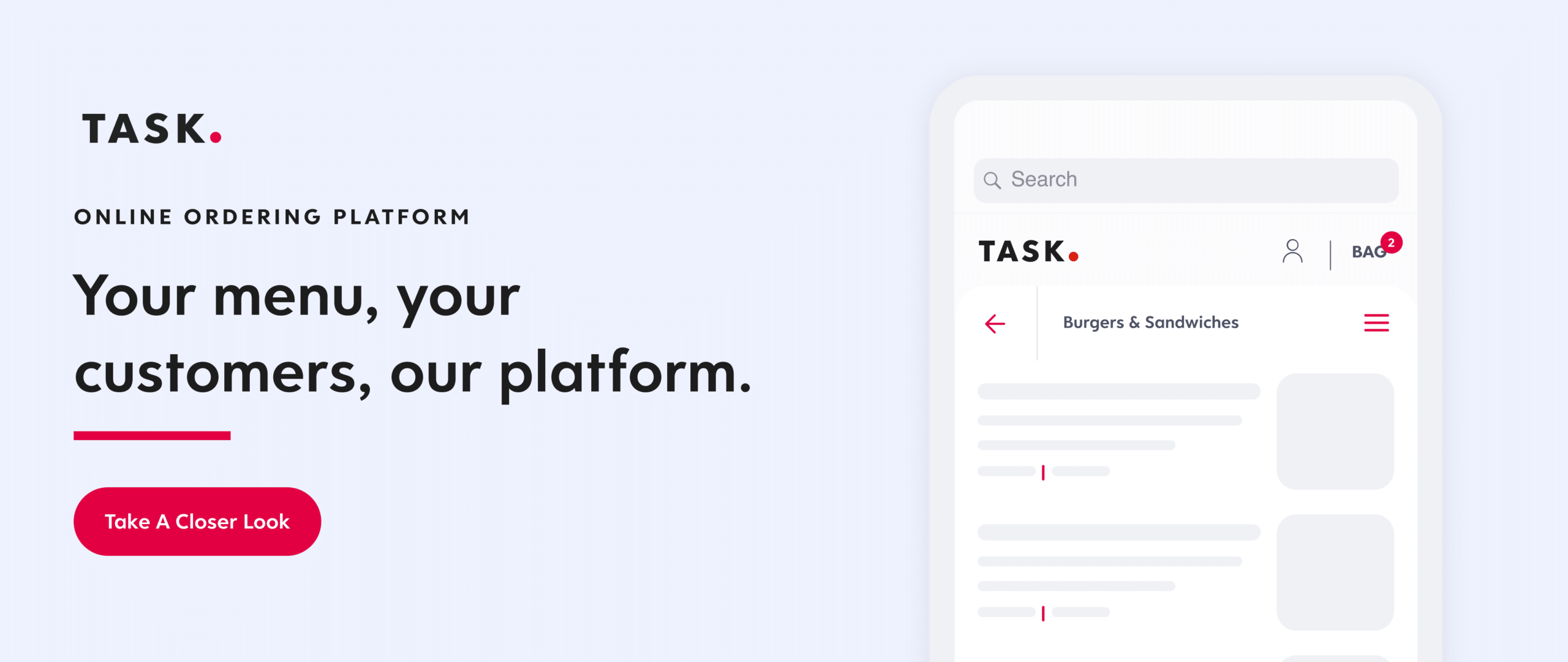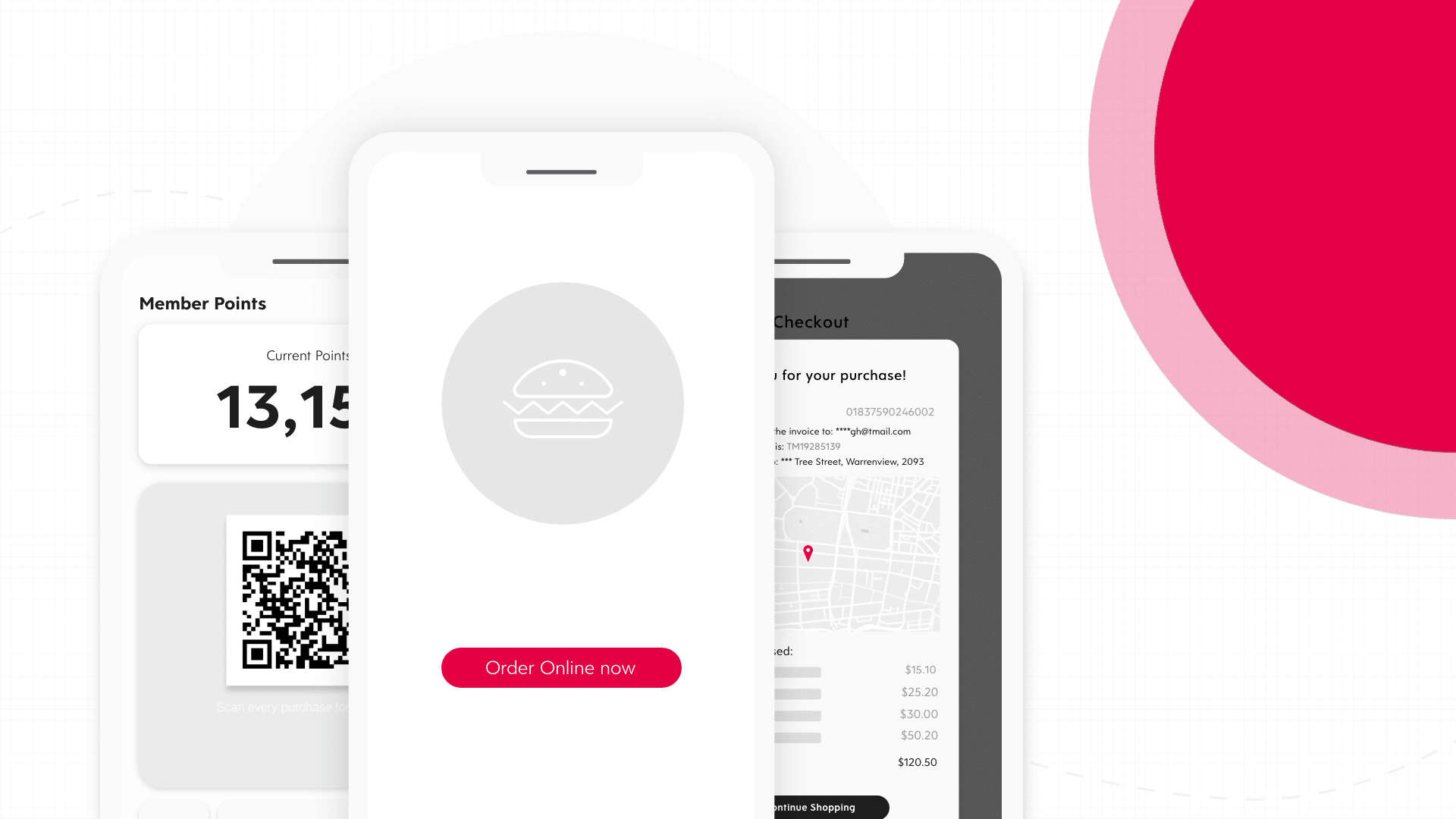It’s a booming market for quick-service restaurants – with expected industry growth to reach $1.47 trillion by 2028.
There is seemingly limitless potential for QSRs and other hospitality businesses to expand their influence over the coming years. However, with user numbers growing exponentially and new brands taking off every day, it can be difficult for QSRs to prepare their digital stack – and specifically, their customer-facing ordering app – for the future.
From navigating constantly changing customer sizes to maneuvering business growth, tech scalability is key to managing and supporting future expansion. Here’s what QSRs should be considering when it comes to their ordering apps – and how to approach your digital stack from a scalable mindset.
What is scalability and why does it matter for ordering apps?
As brands grow and their engagement numbers increase, so does their need for a highly functional, adjustable digital platform. Scalability is all about building tools that can be altered and expanded in order to sustain larger audiences and better customer experiences.
Whether your business goals are to broaden your customer segments or to expand into new categories – you need to start with a robust and amendable digital foundation. Scalability should not only consider the potential to grow in user numbers, but also in capabilities, including geographic expansion, more payment options, further complexities with ordering systems, or even the ability to integrate with third parties.
Russ Bennet, General Manager for TASK Group, Plexure Division, is an expert in scalability for enterprise-level technology. He emphasizes the importance for brands to prepare for future, unpredictable growth and changes in the future. “Scalability isn’t really about what you’re doing right now. It’s about setting up the core of your tech to allow you to do anything beyond your wildest dreams later down the line.”
Why Scaling an App Takes Work
Developing an integrated digital system that is limitlessly scalable is easier said than done. One of the most common problems that QSRs face when they try to grow their online ordering app is finding roadblocks in the foundation of their digital stack and discovering pieces of tech that can’t be integrated or changed.
That’s why it’s so important to take a long-term, thorough approach to scaling your online ordering app. There is a lot to consider, from the design of your loyalty program to the expected user size, which can mean significant heavy lifting for businesses trying to develop these systems on their own.
Approaching scalability is far easier and usually more successful when it is part of a fully compatible technology solution. Developing a scaled ordering app should seamlessly become part of your brand’s wider ecosystem, with data integration across every channel, touchpoint, and digital tools.
Why You Need Online Ordering for Your Restaurant
Read more about the future of online ordering, and help your business stay ahead of the digital curve.
5 Things to Keep In Mind about scalability
“There is a tempting trap for QSRs to just focus on current needs, or rather, to invest in one piece of the puzzle at a time. But where this short-sighted mindset leads towards – as we see constantly from a technical point of view – is speed bumps and messy transitions down the line,” says Russ.
Instead, businesses should consider a few crucial aspects of scalability at the forefront of their app’s development. Here are the most important aspects of a scalable digital system to keep in mind.
Build for the Future
To set your QSR up for success, Russ says to think miles beyond your next goalpost. You should consider how your model is going to work when you grow your scale from 10 to 10,000 to 100,000.
That doesn’t mean, however, that you have to put in the resources to actually enact the full scale of your program right now. Instead, Russ explains, “it’s about designing a roadmap for your digital stack that can expand and change as you need it to later.”
Ensuring that your app stands the test of time is about looking at the big picture, and holistically assessing the market, your positioning, and how you envision your influence to swell and evolve in the future.
Do Away with Legacy Systems
There is a tendency for QSRs to try to stick with their current system, and simply tack on new bits and pieces of technology when and where they are needed.
The problem with this approach is that working across multiple vendors makes it nearly impossible to achieve seamless integration. The infrastructure of legacy systems is often incompatible with newer advanced technology, making your digital stack inflexible.
Plus, the more complex and dispersed your technology, the more susceptible you are to cyber-attacks and security breaches.
QSRs who are looking to move away from legacy systems should prioritize a single, interconnected digital ecosystem that can support data integration and frictionless scalability.
How QSRs Can Adapt To Stay Ahead
QSRs face fierce competition – but your mobile order and pay system may be the key to boosting profits.
Get Rid of Point Solutions
Business fragmentation happens when companies invest in a separate solution for each function, such as online sales, customer service, inventory management, or transactional data.
The result of fragmentation is the build-up of data silos that make it harder for each technology element to collaborate and communicate. It also makes it more difficult for brand leaders to uncover accurate and meaningful insights across disparate silos of information.
Point solutions, while they may seem to be a more economically efficient way to add new technology to your business operations, often lead to convoluted and inoperable systems later down the line. Ultimately, this can cost large, growing businesses more overall to fix in the future and lead to missed opportunities due to unexpected growing pains.
Design for Simplicity and Reliability
The best way to ensure scalability in your online ordering app – or just about any other digital tool, for that matter – is to focus on building simple UI and UX. Functional and robust technology shouldn’t mean complex and difficult to understand. In fact, superior functionality should be streamlined and focused, especially when operating on a large scale.
To ensure resilience, you should be constantly running performance and stress tests on your system. Building audits into everyday maintenance and processes will help drive quick improvements and highlight any problems that crop up.
Keep Track of Compliances
When it comes to large franchise organizations and enterprise-level technology, Russ says, “Compliance and regulation are so important. Newer businesses should always be considering how they are building that compliance into every new development.”
From geo-specific requirements to having cross-organizational consistency in hardware, scalability is also about how your digital system can grow while also meeting heightening security standards.
Data protection and following best practices around legal and ethical requirements can also add extra layers of complexity that should be accounted for at every stage of business and digital growth.
How to Drive Seamless Scalability with confidence
With so many factors to consider, it’s no wonder that many of the world’s leading QSR brands chose to work with a technology partner to design and build a scalable digital stack.
A seamless scalable model should feature:
- Total integration between every point of service – from ordering to kitchen operations to inventory management to data analytics and marketing
- A consolidated and collaborative single-solution ecosystem
- Connected functionalities with API expansion
- Endless customization capabilities to fit your brand’s unique vision
- Robust and highly functional UX
With any piece of technology, compatibility, and flexibility are absolutely key when considering scalability. As Russ says, “Investing in the right tools now is what makes it possible for you to widen your audience later.”
As a customer-facing touchpoint, and a key driver of growth, online ordering apps should be at the forefront of a QSR’s digital strategy. To prepare for future growth that considers the wider potential of your brand and the changes in regulation and security, lean on proven experts who understand scalability at an enterprise level.

